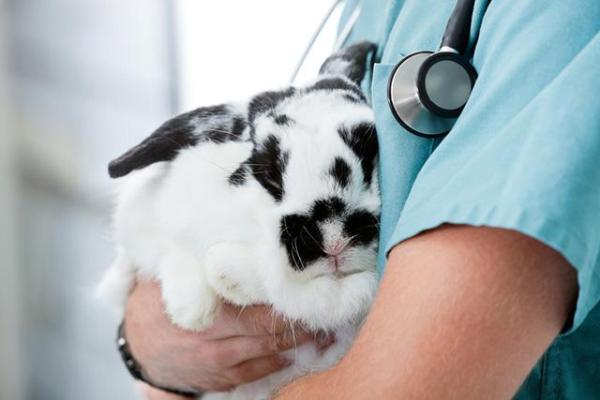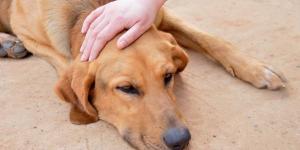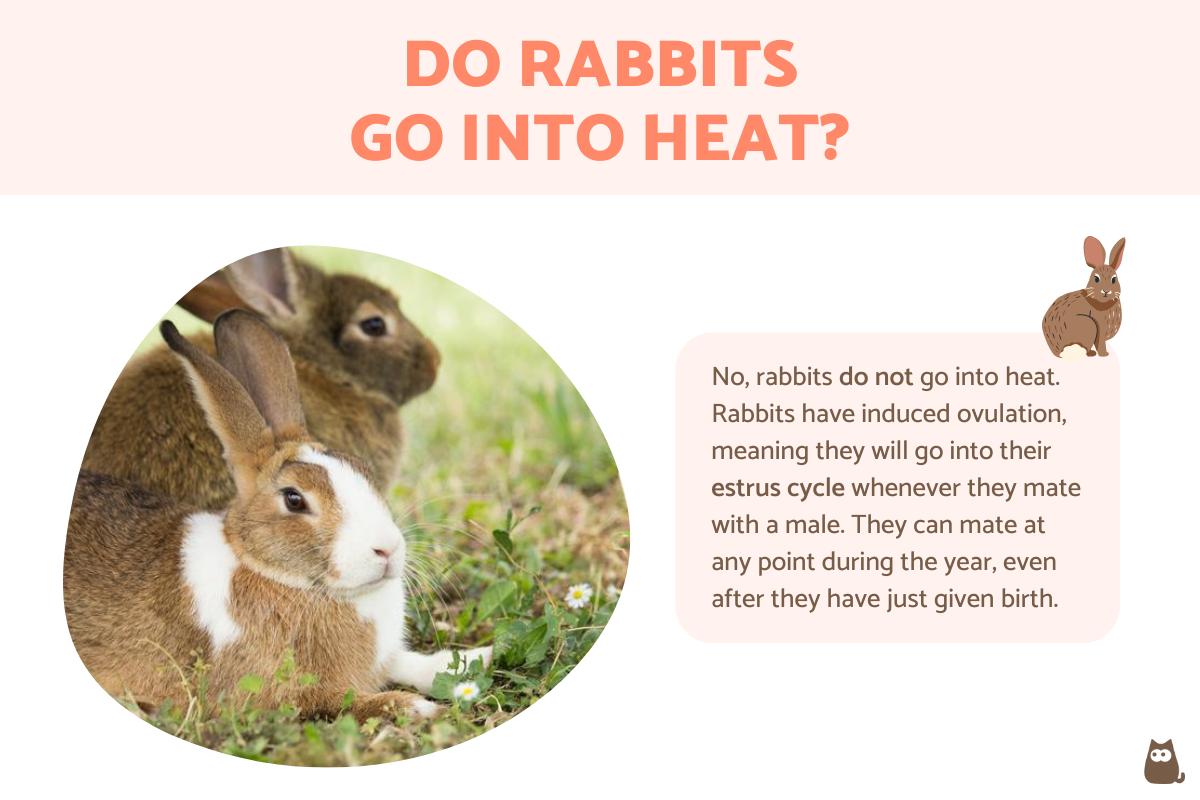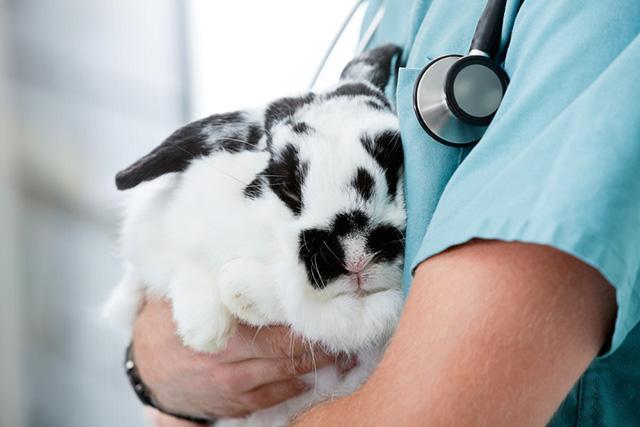Do Rabbits Go Into Heat?



See files for Rabbits
When a female dog or cat is receptive to a male for mating, she is in heat. This is a stage of her estrus cycle when she is fertile and can become pregnant. Although they have an estrus cycle, rabbits do not go into heat like a cat or dog. This is because they mate thanks to a process known as induced ovulation. It is a type of fertilization which allows them to mate at almost any time of the year. Such an ability to procreate is part of the reason rabbits are so associated with fertility in nature and in larger cultural contexts.
At AnimalWised, we learn more about the rabbit estrus cycle by asking do rabbits go into heat? We find out what is required for induced ovulation and how this affects rabbits we keep as pets.
Do rabbits go into heat?
The estrus cycle is a process whereby a female mammal's body changes to allow fertilization of her eggs. This requires a period of ovulation for the eggs to be fertilized by the sperm of a male. While it describes a set of similar physiological changes which occur in each animal, the specifics of these changes can differ significantly according to species.
For example, a dog has an estrus cycle which is influenced by factors such as the time of year and amount of daylight. A canine estrus cycle carries out spontaneous ovulation. This means she will only be fertile when she spontaneously goes into heat, around twice a year on average. While the total estrus cycle including all its phases lasts around 2 to 4 weeks, she will only be fertile for around 5 to 13 days per cycle.
The rabbit estrus cycle functions differently. Rabbits have something known as induced ovulation. This means they will release their eggs for fertilization whenever they are mated with a male. This means they are fertile all year round, exhibiting something known as continuous receptivity. Their hormones do not cause them to enact the behavioral changes which accompany a heat cycle.
Although cats also have induced ovulation, their hormone cycle means they do go into heat. They are more efficient in terms of reproduction when compared to dogs, but not as much as rabbits. Rabbits are so fertile they can go into postpartum estrus hours after giving birth. This means if they mat with a male, they can become pregnant on the same day they gave birth to a litter of kits.
A doe (female rabbit) does not have regular estrus cycles like some other mammals. However, she will be more or less receptive to a male due to various factors. These include:
- Pheromones: when a male is around her, the pheromones he secretes can causes hormonal responses in the rabbit which makes them more likely to be receptive to mating.
- Seasonal changes: although they do not have seasonal ovulation like dogs, rabbits will respond to weather patterns and photoperiods. During times of warmer temperatures and more sun, they are more likely to mate. This is an evolutionary advantage because the better conditions mean there is a greater chance of her kits surviving.
- Hormonal profile: different does will have different hormonal profiles which give them a greater drive for sexual reproduction. This is physiological and depends on various factors, including genetics. In this way, some females are more sexually dominant than others.
Do male rabbits go into heat?
Like females, male rabbits do not go into heat. In fact, no male mammal will go into heat because they do not have an estrus cycle. Males do not need to release eggs for fertilization. They carry out spermatogenesis, meaning they can release sperm at any point during the year and impregnate a female. This ability to reproduce constantly is one of the reasons people may use the phrase ‘breed like rabbits’ as well as their symbolism of fertility in many different cultures.
With some variation, male rabbits can be sexually mature at the relatively young age of 4-6 months. This may depend on their size, with larger rabbits usually taking longer to mature than small breeds such as dwarf rabbits. With a life expectancy of somewhere around 8-10 years, this can mean a lot of procreation.
Although male rabbits do not have a reproductive cycle, there are periods when they are more likely to breed. This is usually due to seasonal factors and can differ according to the type of climate in which they live. They also respond hormonally to a female who is more receptive to mating. When this occurs, the male may respond in the following ways:
- Marking with urine: male rabbits are not as territorial as some other animals, but this behavior increases when around receptive females. At this point, they will begin marking any object or area within reach. These markings through urination and defecation will usually be accompanied by a strong odor. They may also rub their chins on different surfaces as they have scent glands in this area also used for marking territory.
- Mounting objects: male rabbits will mount almost anything to relieve some of their sexual frustration when they sense females. If there are no females to mount, he will find a substitute in the form of fabric, water bowls, toys or even their owners extremities (hands, feet, arms, etc.).
- Aggressiveness and territoriality: even if your rabbit has been loving and affectionate up to this point, reproductive behaviors can lead to aggression. It can mean even sticking your hand into the cage can result in a nasty nip or scratch.
- Restlessness: this usually results in continuous motion, running round their hutch, the garden or our homes without much downtime. They are agitated and buzz around like a bee rather than being the docile creatures they were before.
- Gnawing: they increase their gnawing on objects (something also done to file down their constantly growing teeth), but will also start biting and gnawing anything for no reason.
All of these manifestations of a rabbit can lead to distress. It is for this reason it is generally agreed that castration is the kindest course of action for a domesticated rabbit. It not only improves their quality of life, but it makes interaction with them bearable. If you have a male rabbit who is very active reproductively, they will not be an easy pet to live with.

Estrus in female rabbits
As with male rabbits, female rabbits will reach sexual maturity when they are young. This will depend on the rabbit, but it can start between 4-6 months of age. It is maintained throughout their life cycle, also with periods of heightened or lessened sexual activity. Rabbits should not present any blood during the estrus cycle. If they do, it is likely a sign something is wrong and may need to be taken to the veterinarian.
The symptoms of a female rabbit in her estrus cycle are similar to those of a male rabbit sensing a receptive female. We find they will mark territory with urine, have periods of both restlessness and aggression as well as mounting objects for sexual stimulation. We may also see their vulva appears more visible and may turn a reddish-brown color. If pregnancy occurs, gestation will last about 30 days at the end of which they will give birth to somewhere between 1 and 5 kits (baby rabbits).
After the birth, the rabbit will lactate to feed their young. Unlike other animals, they are able to become pregnant again during this period. This is one of the reasons rabbits are considered pests in some areas. Their efficient and rapid ability to procreate can lead to large populations in just a relatively short time. This is another reason it is important to be careful with unsterilized male and female rabbits. If you keep them together, they will likely breed quickly.
In addition to the behavioral changes occurring during the estrous cycle, rabbits are more prone to developing uterine tumors such as adenocarcinoma in rabbits which are potentially life threatening. This is another reason why early neutering or sterilization is recommended. This is especially so for rabbits which live longer as these life threatening conditions will only increase with age.
As we can see, sexually intact male and female rabbits can propose a serious problem of coexistence. In the case of unscrupulous caretakers, this can lead to a pattern of breeding which results in either animal abandonment or cruelty.
How long are rabbits in estrus?
As we have stated, rabbits do not go into heat like other mammals. The length of time rabbits can go into estrus is the reason they can procreate so much. There is no specific amount of time for rabbits to be in estrus. After they reach sexual maturity, they can be in estrus at any time during the year. They may undergo some period where their fervency during heat will be greater or lesser. However, when this time will be is almost impossible to predict.
Whether related to reproduction or not, learn about the most common diseases in rabbits with our related guide.

The importance of sterilizing rabbits
As we hope to have been putting across, behavioral problems occur when males and females are sexually receptive. In the wild, these rabbits are free to mate which reduces the intensity of these problems. In captivity, however, many animals will not be able to mate with the other sex. This results not only in problems for the owners, but a serious issue with stress on the animal and potential serious health problems.
Since the estrous cycle in female rabbits is practically permanent, it is advisable to sterilize them. This should be done towards the end of their first 6 months of life in females. In males, it should happen as soon as their testicles descend. Males and females should be kept separate before sterilization takes place in case they reach sexual maturity before you are able to observe it.
For males, neutering a male rabbit is a relatively simple operation which involves the removal of the testicles. In female rabbits, sterilization is a process known as spaying which is a little more involved. It requires he removal of the internal sexual organs, either the uterus, ovaries or both. Even with this, hospitalization is not required and the rabbits should be able to recover at home. This reduces the stress of being in an unknown place and promotes recovery.
If we decide to sterilize the rabbit, we must also administer antibiotics at home to avoid infections and analgesics to reduce their discomfort. If the rabbits experience too much pain they will stop eating and can die of starvation. We must also keep their hutch and bedding very clean to reduce contamination of the wound which can lead to infection. The behavioral effects on our rabbits will not be immediate. We must have patience as the recovery time can take a few months to return them to calm and affectionate pets. It is also very important this sterilization process is carried out by a professional veterinarian with experience in this area. This is to make the operation as painless as possible as well as being able to treat any complications which may arise.
This article is purely informative. AnimalWised does not have the authority to prescribe any veterinary treatment or create a diagnosis. We invite you to take your pet to the veterinarian if they are suffering from any condition or pain.
If you want to read similar articles to Do Rabbits Go Into Heat?, we recommend you visit our Other health problems category.







